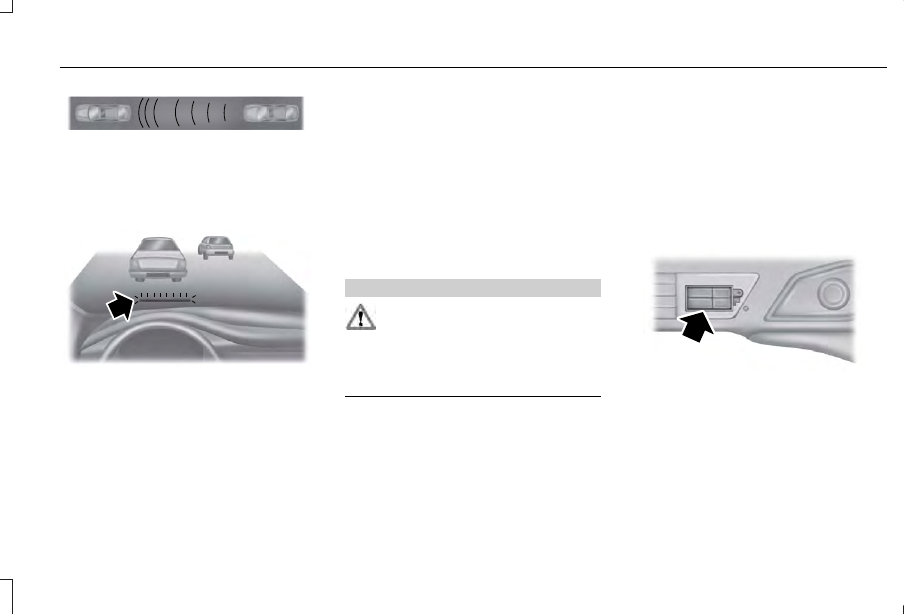Lincoln MKT (2019 year). Manual - part 15

E156130
This system is designed to alert the driver of
certain collision risks. A radar detects if your
vehicle is rapidly approaching another
vehicle traveling in the same direction as
yours.
E156131
If it is, a red warning light illuminates and an
audible warning chime sounds.
The brake support system assists the driver
in reducing the collision speed by charging
the brakes. If the risk of collision further
increases after the warning light illuminates,
the brake support prepares the brake system
for rapid braking. This may be apparent to
the driver. The system does not automatically
activate the brakes but, if the brake pedal is
pressed, full force braking is applied even if
the brake pedal is lightly pressed.
Using the Collision Warning System
WARNING
The collision warning system’s brake
support can only help reduce the
speed at which a collision occurs if the driver
applies the vehicle’s brakes. The brake pedal
must be pressed just like any typical braking
situation.
The warning system sensitivity can be
adjusted to one of three possible settings by
using the information display control. See
General Information (page 108).
Note: If collision warnings are perceived as
being too frequent or disturbing then the
warning sensitivity can be reduced, though
the manufacturer recommends using the
highest sensitivity setting where possible.
Setting lower sensitivity would lead to fewer
and later system warnings. See General
Information (page 108).
Blocked Sensors
E145632
231
MKT (TP4) , enUSA, Edition date: 201803, First-Printing
Driving Aids